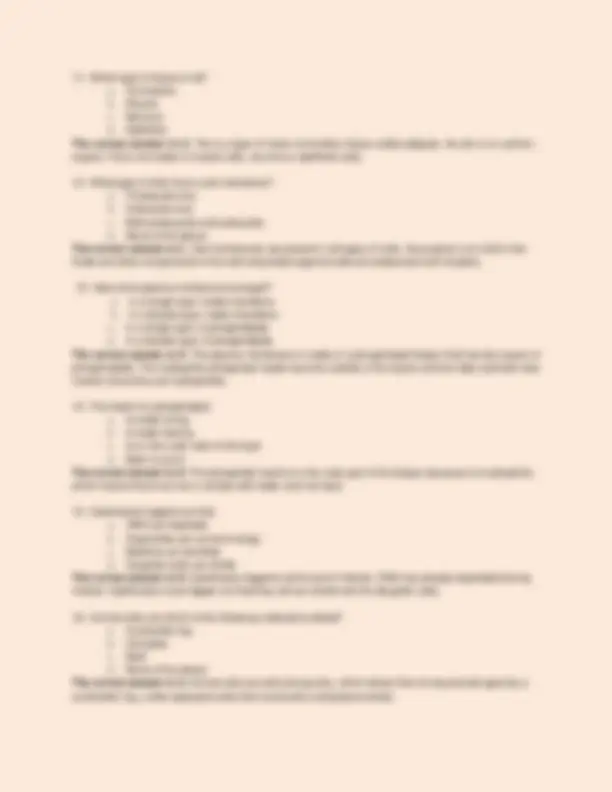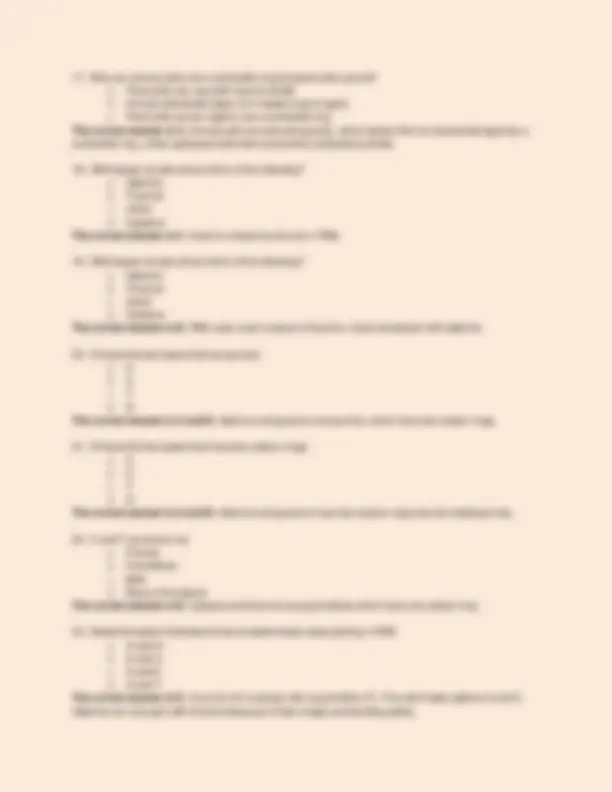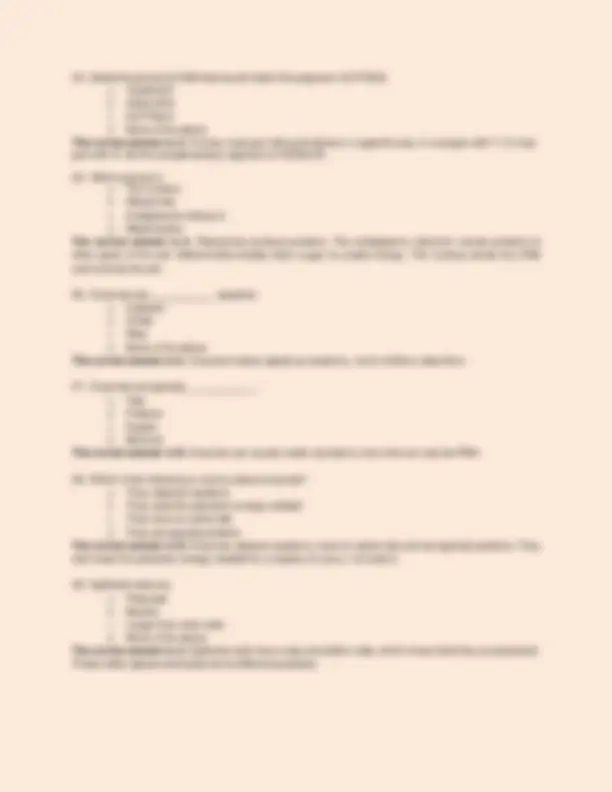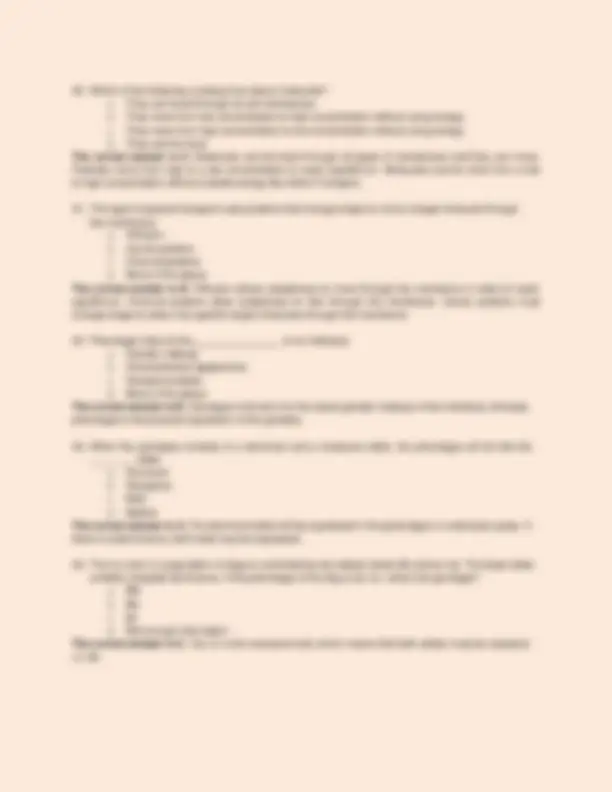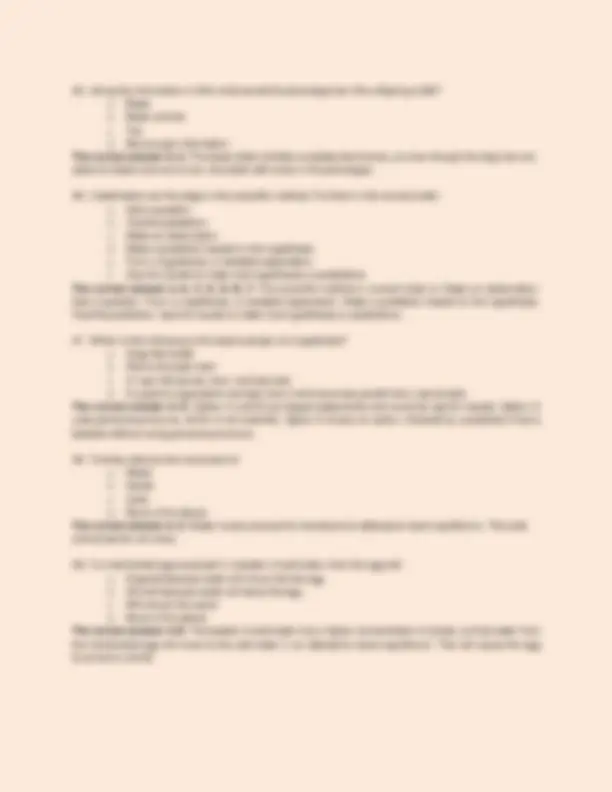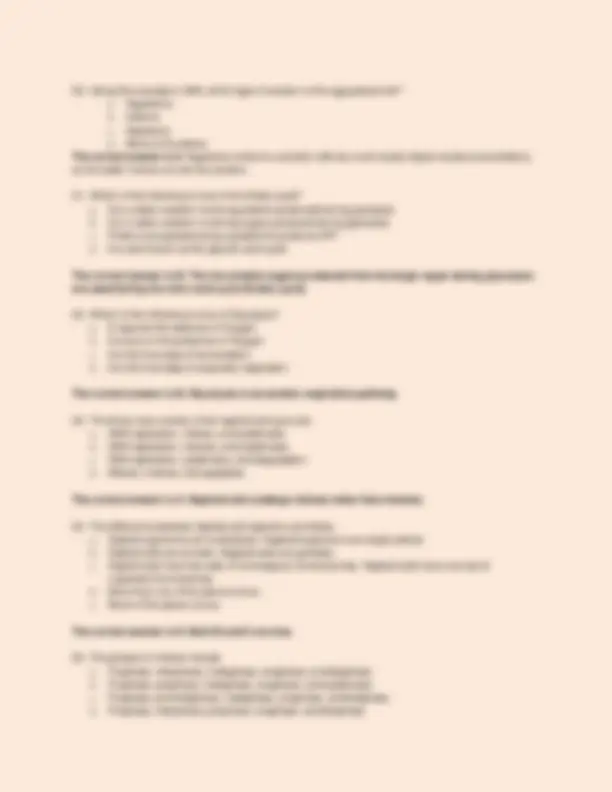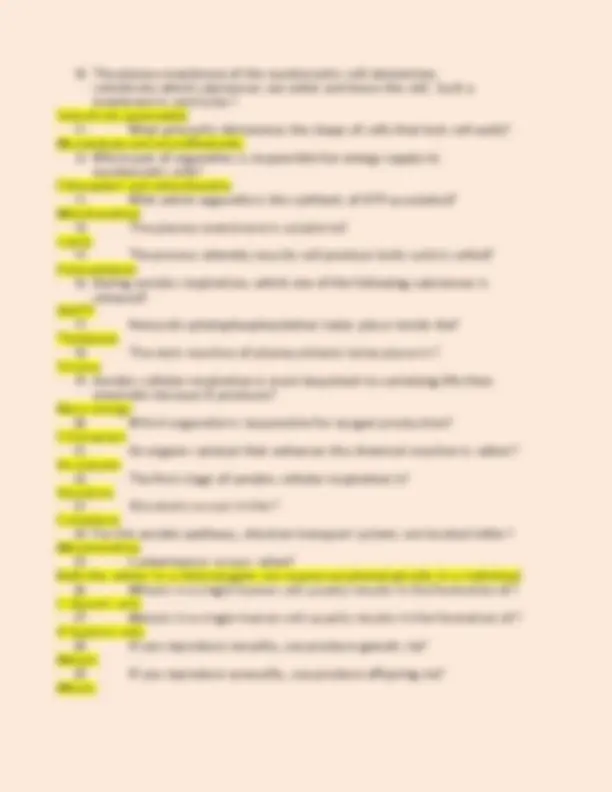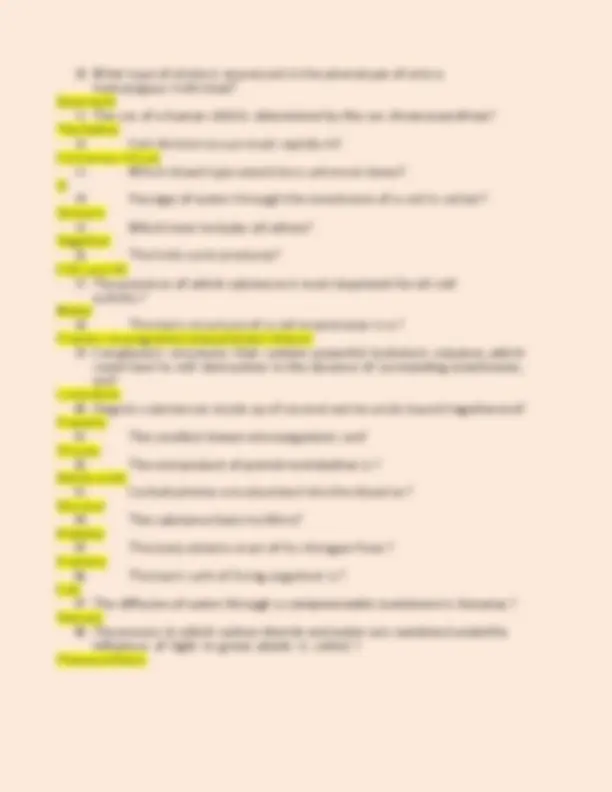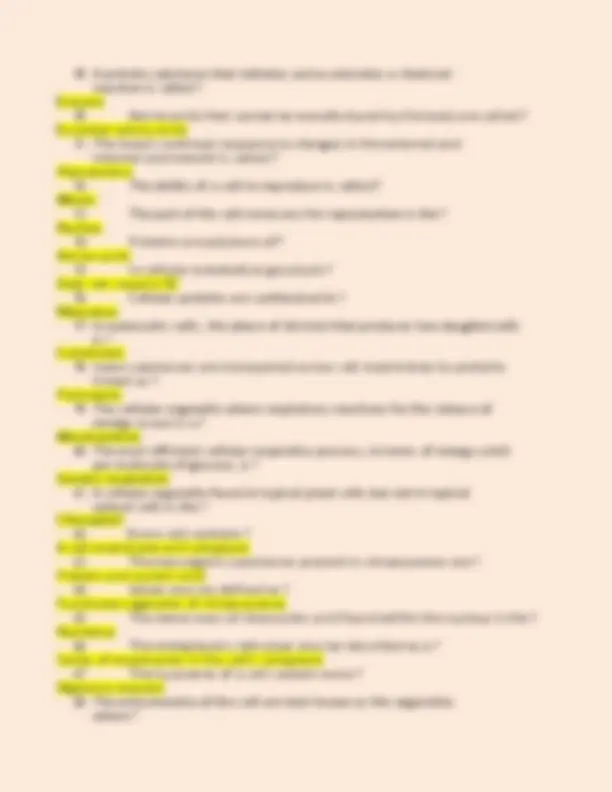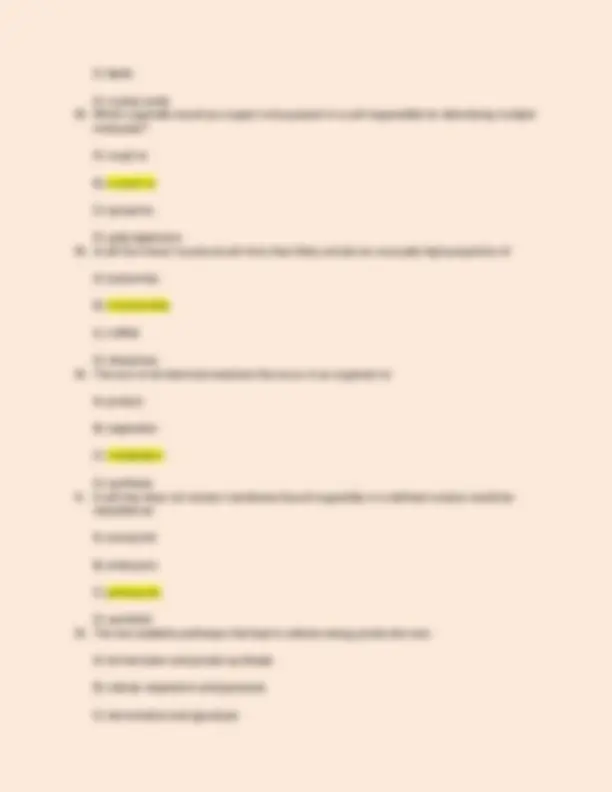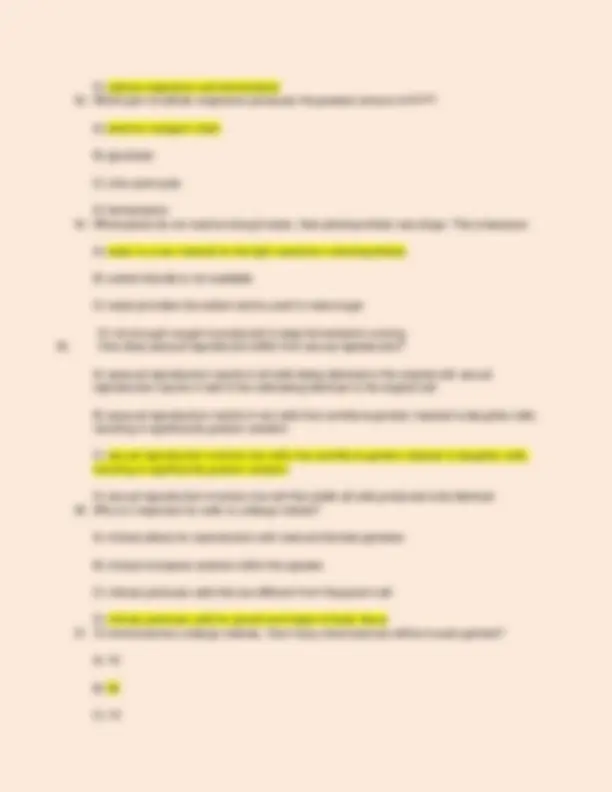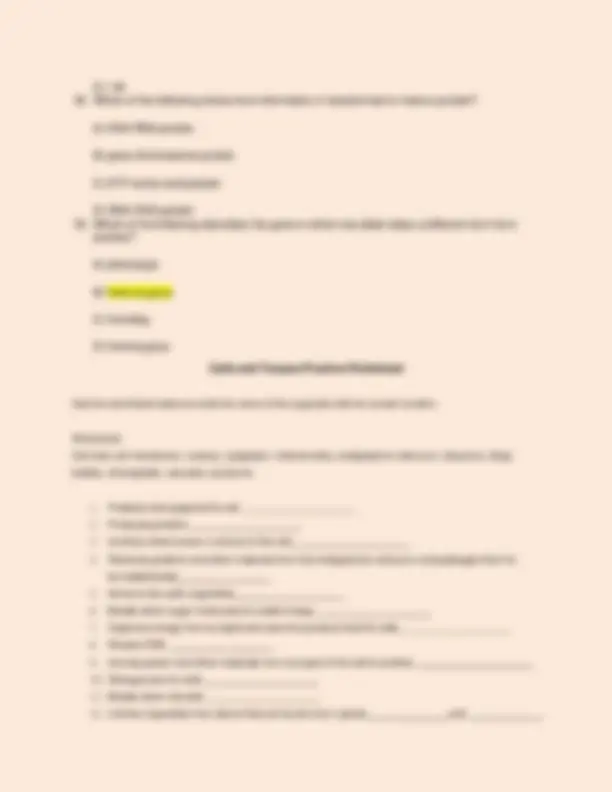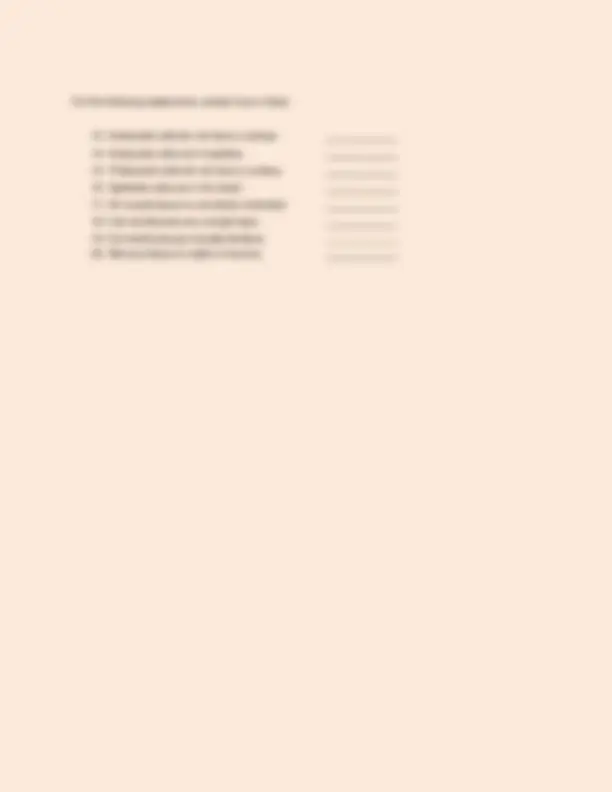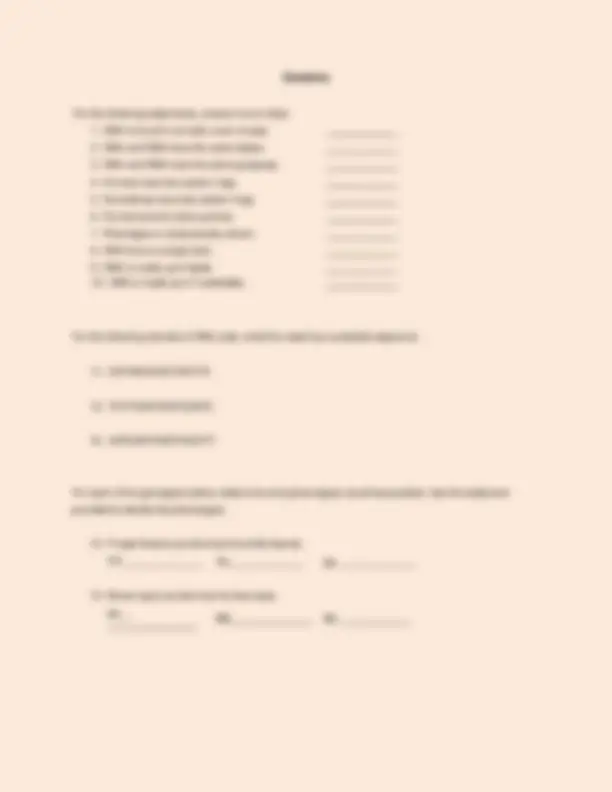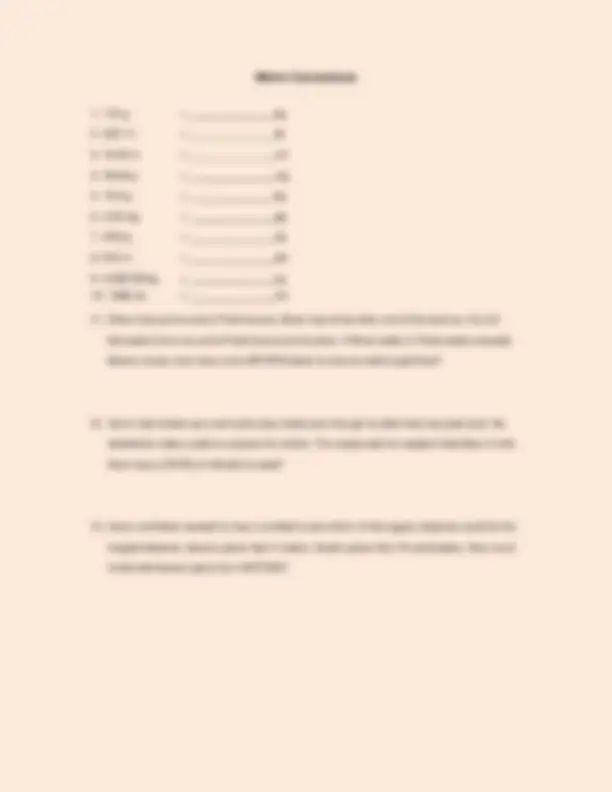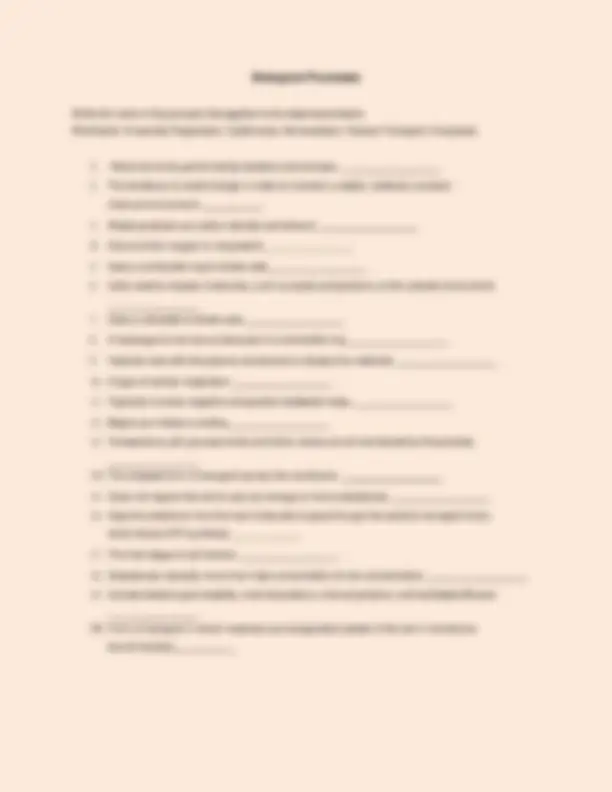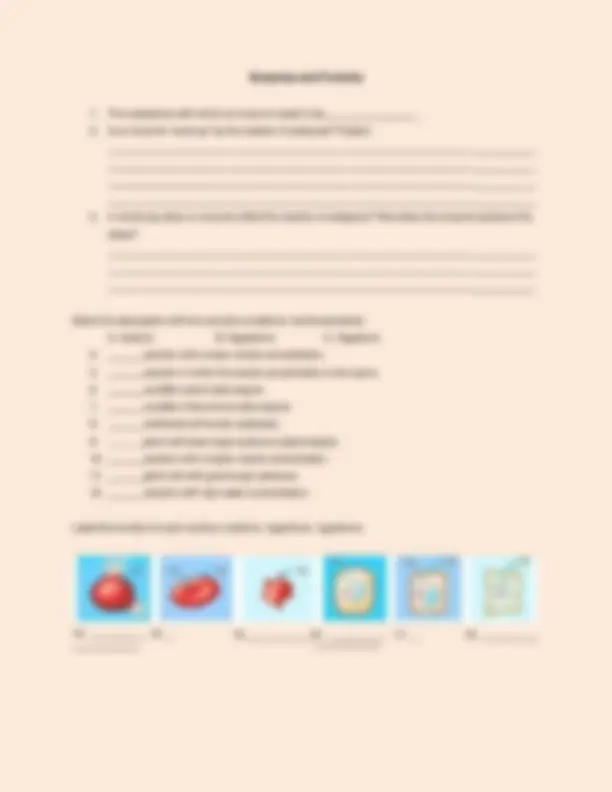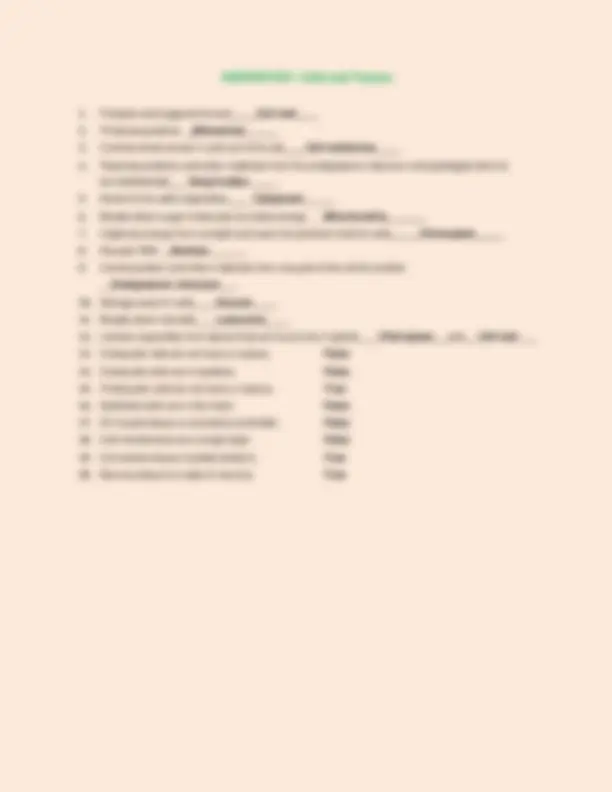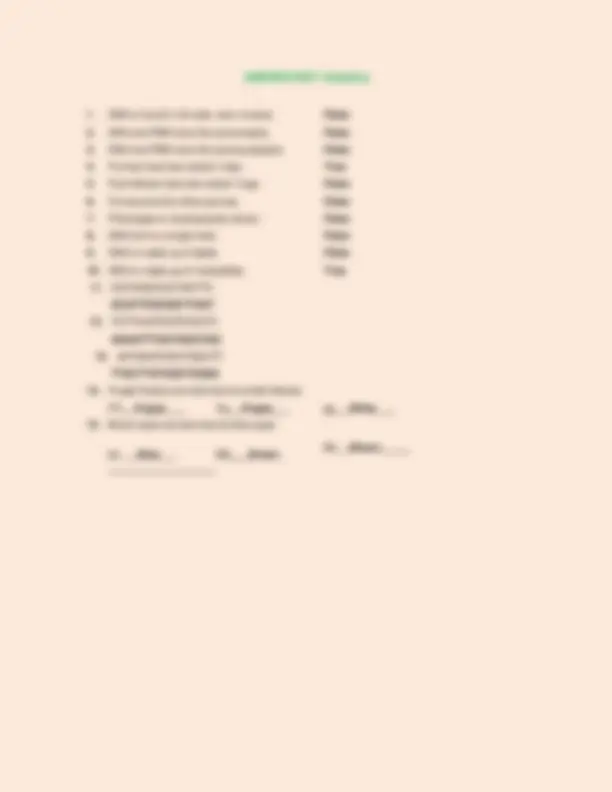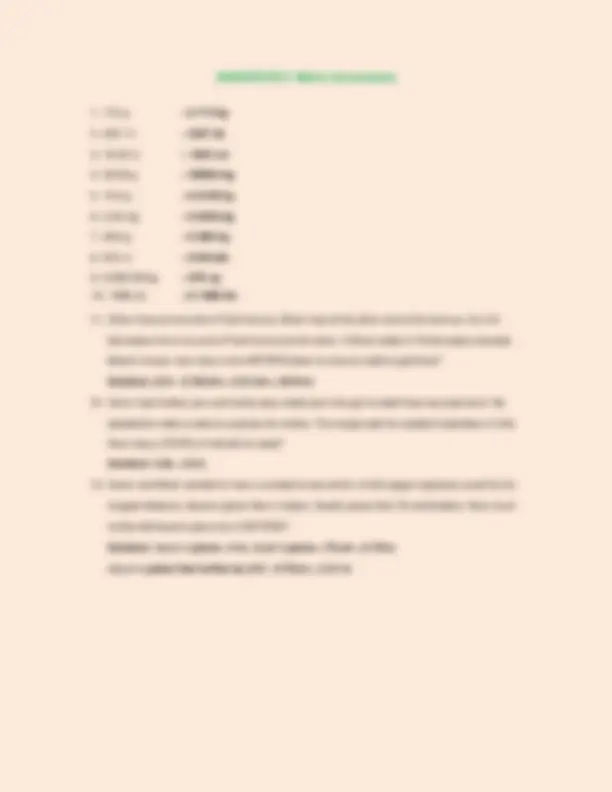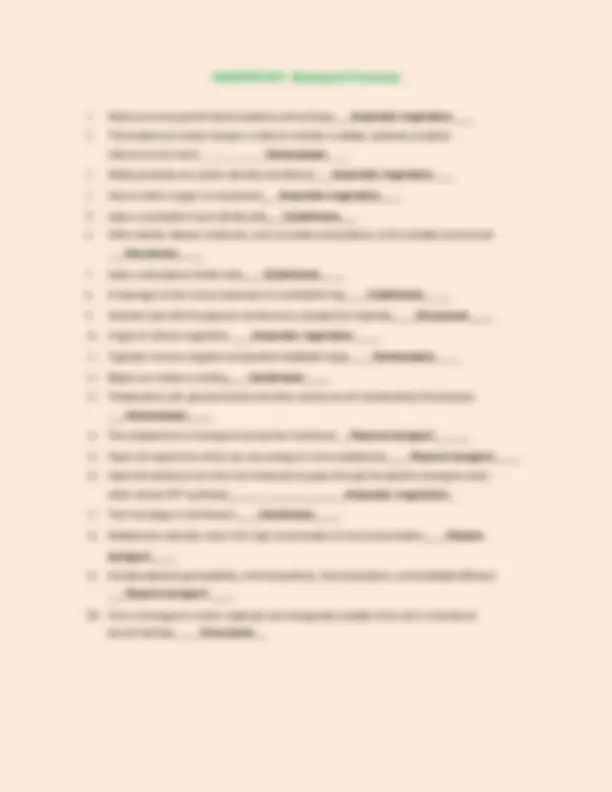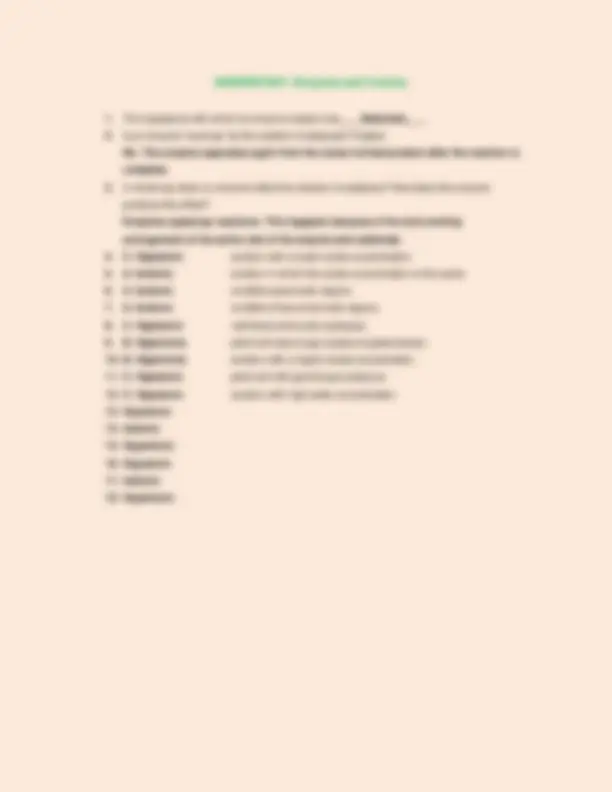HESI A2 BIOLOGY EXAM WITH 300+ QUESTIONS &
CORRECT ANSWERS WITH DETAILED ANSWER KEY
BELOW THE DOCUMENT
1. A patient receives an antibiotic for symptoms of the flu. Why doesn’t the medication work?
a. The medication is for a different type of flu.
b. The medication is not suitable for treating the flu.
c. The medication is not a strong enough dosage amount to cure the patient.
d. None of the above
The correct answer is B. Antibiotics are used for treating bacterial infections, but the flu is caused by a
virus. Although symptoms can be similar in case of a cold (bacteria) or the flu (virus), viruses cannot be
treated using antibiotics.
2. The nucleus is important in a cell because:
a. It stores the DNA
b. It supports the cell
c. It makes protein
d. It makes energy out of food
The correct answer is A. The nucleus is the “brain” of the cell and stores the DNA. A cell wall supports
the cell (only if it is a plant). The ribosomes make protein and the mitochondria makes energy.
3. Cellular respiration happens so that
a. Cells can copy DNA
b. Cells can breathe
c. Cells can convert nutrients to energy
d. Cells can divide
The correct answer is C. The term respiration typically triggers thoughts of breathing, but in this case, it
is referring to the process cells undergo to convert nutrients into ATP. Copying DNA is transcription and
translation. Cells themselves cannot breathe. Cell division is mitosis or meiosis, depending on the type of
cell.
4. Anaerobic respiration happens in _ because _ .
a. Animals; they need energy
b. Plants; they use sunlight
c. Bacteria; they live in environments with low oxygen.
d. None of the above
The correct answer is C. Animals and plants both use aerobic respiration because they have access to
oxygen. Bacteria typically live in environments with little to no oxygen and must still produce energy to
survive.
5. All bacteria are bad and always cause infections.
a. True
b. False
The correct answer is B. Bacteria can be good, such as the bacteria in the intestines. This bacterium
can become problematic if it travels to a location other than where it belongs. Pathogenic bacteria are bad
and can cause infections, but not all bacteria are this type.

